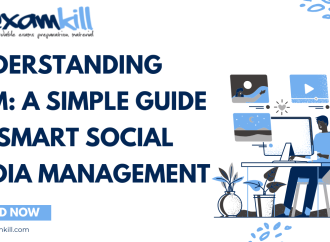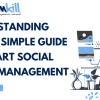Predictive analytics. It’s one of the most buzzed-about topics in business today, and for good reason. Predictive analytics can help you turn your data into actionable insights that can inform decisions, optimize operations, and increase efficiency. But how do you make sense of all this data? How do you leverage it to unlock your potential?
Predictive analytics. It’s one of the most buzzed-about topics in business today, and for good reason. Predictive analytics can help you turn your data into actionable insights that can inform decisions, optimize operations, and increase efficiency. But how do you make sense of all this data? How do you leverage it to unlock your potential? In this blog post, we will explore the power of predictive analytics and how to make sense of the data you have to yield better results. Let’s get started!
The benefits of predictive analytics
Predictive analytics is a powerful tool that can help organizations make better decisions by understanding trends and anticipating future outcomes. When used properly, predictive analytics can help organizations improve their operations, better understand their customers, and make more informed strategic decisions.
Some of the benefits of predictive analytics include:
• Improved decision-making: Predictive analytics can help organizations make better decisions by understanding trends and anticipating future outcomes.
• Better customer understanding: Predictive analytics can help organizations better understand their customers’ needs and preferences.
• More informed strategic decisions: Predictive analytics can help organizations make more informed strategic decisions by identifying market opportunities and risks.
• Enhanced operational efficiency: Predictive analytics can help organizations improve their operational efficiency by identifying inefficiencies and potential problems.
The challenges of predictive analytics
Predictive analytics is a powerful tool that can help organizations make better decisions, but it comes with a few challenges. First, predictive analytics requires a lot of data. This data can be difficult and expensive to collect, especially if it spans multiple data sources. Second, predictive analytics models can be complex and require expert knowledge to build and interpret. Finally, results from predictive analytics are only as good as the data and assumptions used to generate them. Organizations must carefully consider all of these factors when using predictive analytics to make decisions.
How to make sense of your data
If you’ve ever felt like you’re swimming in a sea of data, you’re not alone. Businesses of all sizes are collecting more data than ever before, and it can be tough to know what to do with it all. That’s where predictive analytics comes in.
Predictive analytics is a powerful tool that can help you make sense of your data and find patterns that you may not have been able to see before. By using predictive analytics, you can make better decisions about your business, your customers, and your marketing efforts.
If you’re not sure where to start with predictive analytics, don’t worry – we’ve got you covered. In this post, we’ll show you how to make sense of your data with predictive analytics. We’ll also give you some tips on how to get started with predictive analytics in your business.
Predictive Analytics Tools
Predictive analytics tools are essential for unlocking the power of predictive analytics. By understanding which data points are most important to your business goals, you can make better decisions about where to focus your resources. The right predictive analytics tool can help you identify trends and patterns in your data, so you can anticipate future events and plan accordingly.
There are a number of different predictive analytics tools available on the market, so it’s important to choose one that best fits your needs. If you’re not sure where to start, consider using a tool like Google Analytics or Tableau. These platforms offer a variety of features and capabilities that can help you get the most out of your data.
Conclusion
In this article, we have explored the power of predictive analytics and how it can be used to make sense of data. We have discussed why predictive analytics is so useful, the different types of models that are available, and how you can use predictive analytics in your own business. With predictive analytics, businesses have the opportunity to make more informed decisions based on data they already possess. By leveraging its powerful capabilities, companies can gain a competitive edge in today’s fast-paced marketplace.























Leave a Comment
Your email address will not be published. Required fields are marked with *